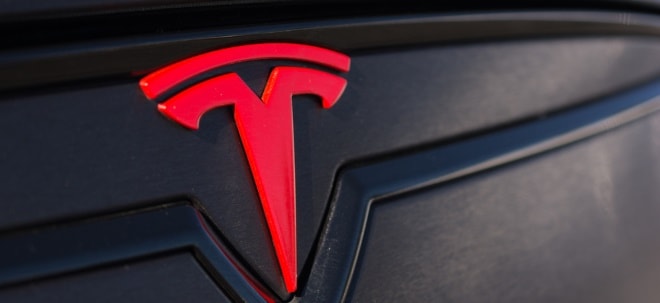Fruits and Vegetables Coatings Market to Grow by USD 334.9 Million (2024-2028), Benefits of Coatings Boost Market, Report on How AI Is Driving Market Transformation - Technavio
NEW YORK, Feb. 7, 2025 /PRNewswire/ -- Report with the AI impact on market trends - The global fruits and vegetables coatings market size is estimated to grow by USD 334.9 million from 2024-2028, according to Technavio. The market is estimated to grow at a CAGR of over 6.83% during the forecast period. Benefits offered by fruits and vegetables coatings is driving market growth, with a trend towards innovations in fruits and vegetables coatings. However, growing demand for fresh fruits and vegetables poses a challenge. Key market players include Aadhya Technology, Akorn Technology, Apeel Technology Inc., Citracote (Pty) Ltd., Colin Campbell Chemicals Pty Ltd., D. Manoharlal Shellac Pvt. Ltd., Flo Chemical Corp., Fomesa Fruitech SLU, Handary SA, Hazel Technologies Inc., John Bean Technologies Corp., Michelman Inc., Nipro Life Sciences, Productos Citrosol SA, RPM International Inc., Sanifruit, Sufresca, UPL Ltd., AgroFresh Solutions Inc., and Pace International LLC.
Key insights into market evolution with AI-powered analysis. Explore trends, segmentation, and growth drivers- View Free Sample PDF
Fruits And Vegetables Coatings Market Scope | |
Report Coverage | Details |
Base year | 2023 |
Historic period | 2018 - 2022 |
Forecast period | 2024-2028 |
Growth momentum & CAGR | Accelerate at a CAGR of 6.83% |
Market growth 2024-2028 | USD 334.9 million |
Market structure | Fragmented |
YoY growth 2022-2023 (%) | 6.22 |
Regional analysis | APAC, Europe, North America, Middle East and Africa, and South America |
Performing market contribution | APAC at 44% |
Key countries | US, China, India, Spain, and Italy |
Key companies profiled | Aadhya Technology, Akorn Technology, Apeel Technology Inc., Citracote (Pty) Ltd., Colin Campbell Chemicals Pty Ltd., D. Manoharlal Shellac Pvt. Ltd., Flo Chemical Corp., Fomesa Fruitech SLU, Handary SA, Hazel Technologies Inc., John Bean Technologies Corp., Michelman Inc., Nipro Life Sciences, Productos Citrosol SA, RPM International Inc., Sanifruit, Sufresca, UPL Ltd., AgroFresh Solutions Inc., and Pace International LLC |
Market Driver
The Fruits and Vegetables Coatings market is witnessing significant growth due to the increasing demand for edible coatings using eco-friendly technology. These coatings offer benefits like moisture transfer, gas exchange, and food preservation by preventing oxidation processes and microbial contamination. The use of active substances in the polymer matrix enhances food safety and maintains nutritional qualities and sensory attributes. Coatings made from natural goods like protein-based films, polysaccharide-based films, and seaweed-based films are gaining popularity among vegetarians and health-conscious consumers. The flexible packaging industry is also embracing these coatings for wastage reduction and shelf life improvement. Key trends include the use of active ingredient carriers, methyl esters, ethyl esters, and fatty acids as additives. Regulatory approval for these coatings is crucial to ensure safety and non-polluting nature. The market is also exploring the use of biodegradable plastics like oxo biodegradable plastics and biodegradation for sustainable packaging solutions. Pre-harvesting and post-harvesting conditions significantly impact the nutritional value and appearance of fresh produce. Coatings can help mitigate the effects of these conditions and maintain color and texture. The use of antimicrobial agents, antigas coating, and antigens like xanthan gum and carrageenan also adds value to the market.
Fruit and vegetable growers aim to preserve their produce to enhance profitability and minimize spoilage. Vendors providing post-harvest solutions, like fruits and vegetables coatings, are innovating to meet this demand. For instance, NatureSeal introduced a shelf-life extension powder for freshly cut strawberries in October 2020. This nutritious, clean-label coating maintains color, firmness, and flavor for up to eleven days when refrigerated. In March 2020, Sufresca launched edible coatings that replace plastic packaging for fresh produce, thereby reducing food waste. These advancements demonstrate the industry's commitment to improving produce preservation and sustainability.
Request Sample of our comprehensive report now to stay ahead in the AI-driven market evolution!
Market Challenges
- The Fruits and Vegetables Coatings market faces several challenges in the food industry. Edible coatings must provide effective moisture transfer and gas exchange while maintaining food safety and nutritional qualities. Oxidation processes and microbial contamination are major concerns, leading to the use of active substances and eco-friendly technology like polymer matrices. Regulatory approval for additives like methyl esters and ethyl esters, derived from fatty acids, is essential. Sensory attributes and barrier properties are crucial for consumer acceptance. Natural goods, such as protein-based films from sources like Abrafrutas, insects, and microorganisms, are gaining popularity among vegetarians. Food preservation and healthy diet trends drive demand for waste-free products, challenging plastic packaging and promoting biodegradable alternatives like oxo-biodegradable plastics and biodegradation. Pre- and post-harvesting conditions significantly impact the nutritional value and shelf life of fresh produce. Innovations in packaging technology, such as Apeel coating, focus on reducing food and packaging waste in the horticulture commodities sector. Antimicrobial agents and edible biopolymers like chitosan, starch, alginate, cellulose, and pullulan are essential for microbial stability and safety. The flexible packaging industry seeks to improve shelf life and reduce wastage while maintaining the non-polluting nature of these coatings.
- The fresh produce market, specifically for fruits and vegetables, faces unique challenges due to the perishable nature of these items. Uncoated, they have a limited shelf life and must be consumed promptly after harvesting. In Europe, the trend toward organic and ready-to-eat (RTE) vegetables is gaining traction in countries like Portugal and Spain. This shift in consumer preference towards fresh, uncoated produce is expected to negatively impact the demand for vegetable coatings. Farmers and companies in these regions are responding to this trend by focusing on organic and RTE vegetable products, which do not require coatings.
Discover how AI is revolutionizing market trends- Get your access now!
Segment Overview
This fruits and vegetables coatings market report extensively covers market segmentation by
- Type
- Hydrocolloids
- Lipids
- Composites
- Product
- Fruits Coatings
- Vegetables Coatings
- Geography
- APAC
- Europe
- North America
- Middle East And Africa
- South America
- Origin
- Natural
- Synthetic
- Application
- Spray Coating
- Dip Coating
- Brush Coating
- Functionality
- Preservation
- Antimicrobial
- Moisture Control
- Others
1.1 Hydrocolloids- Hydrocolloids, high-molecular-weight hydrophilic compounds, are widely used in food formulation as functional additives. They enhance food properties, such as consistency, texture, taste, and shelf life. In the fruits and vegetables coatings market, hydrocolloids offer advantages like prolonging shelf life and reducing spoilage. Their natural origin aligns with the demand for clean-label, eco-friendly products. Ongoing research aims to improve their effectiveness and safety. This focus on hydrocolloids is anticipated to boost the growth of the global fruits and vegetables coatings market.
Download a Sample of our comprehensive report today to discover how AI-driven innovations are reshaping competitive dynamics
Research Analysis
The Fruits and Vegetables Coatings market refers to the use of edible coatings on fruits and vegetables to enhance their shelf life, reduce wastage, and improve sensory qualities. These coatings are typically made from eco-friendly technologies, including polysaccharides, lipids, and composites, forming a polymer matrix that acts as a protective barrier against moisture transfer, gas exchange, oxidation processes, insects, and microorganisms. Active substances, such as antimicrobial agents and antigas coatings, can be incorporated into the coating to further enhance food preservation. The use of these coatings can lead to significant improvements in food safety, nutritional qualities, and appearance, making them a valuable addition to the flexible packaging industry. Wet coatings and protein-based films are also popular options, offering advantages such as color enhancement and improved shell life. Overall, the market for fruits and vegetables coatings continues to grow as consumers and food producers seek innovative solutions to reduce food waste and improve the quality and shelf life of fresh produce.
Market Research Overview
The Fruits and Vegetables Coatings market refers to the use of edible coatings on fresh produce to enhance their shelf life, preserve their nutritional qualities, and improve sensory attributes. These coatings are made from various materials, including polymers, proteins, polysaccharides, lipids, and composites. Eco-friendly technology is increasingly being used to produce these coatings, with a focus on biodegradable and non-polluting materials. Moisture transfer and gas exchange are key functions of these coatings, helping to maintain the freshness of the produce. Oxidation processes can be inhibited through the use of active substances, while maintaining food safety is paramount. Natural goods, including vegetarians, are driving demand for waste-free products, leading to an increase in the use of edible coatings. Packaging technology plays a crucial role in the effectiveness of these coatings, with microbial contamination a major concern. Protein-based films, such as collagen and soy protein, are popular choices due to their biodegradable nature and ability to act as active ingredient carriers. Xanthan gum and polysaccharide-based films, as well as seaweed-based films, are also gaining popularity. The use of edible coatings in the fresh produce industry can lead to significant reductions in food and packaging waste, as well as improvements in shelf life and the preservation of nutritional value. Regulatory approval is essential to ensure the safety and effectiveness of these coatings, with a focus on biodegradation and non-polluting materials. Active ingredients, such as antimicrobial agents and antioxidants, can be incorporated into the coatings to enhance their functionality. The use of natural materials, such as insects, microorganisms, and pre- and post-harvesting conditions, can also impact the nutritional value and sensory attributes of the produce. The flexible packaging industry is also utilizing edible coatings to improve the shelf life and reduce the wastage of horticulture commodities. The use of edible coatings can lead to significant reductions in food waste, as well as improvements in the appearance and color of the produce. Wet coatings and antigas coatings are popular choices for specific applications. In summary, the Fruits and Vegetables Coatings market is a dynamic and growing industry focused on enhancing the freshness, preservation, and sensory qualities of fresh produce through the use of edible coatings. With a focus on eco-friendly technology, natural materials, and regulatory approval, these coatings offer significant benefits for both consumers and the environment.
Table of Contents:
1 Executive Summary
2 Market Landscape
3 Market Sizing
4 Historic Market Size
5 Five Forces Analysis
6 Market Segmentation
- Type
- Hydrocolloids
- Lipids
- Composites
- Product
- Fruits Coatings
- Vegetables Coatings
- Geography
- APAC
- Europe
- North America
- Middle East And Africa
- South America
- Origin
- Natural
- Synthetic
- Application
- Spray Coating
- Dip Coating
- Brush Coating
- Functionality
- Preservation
- Antimicrobial
- Moisture Control
- Others
7 Customer Landscape
8 Geographic Landscape
9 Drivers, Challenges, and Trends
10 Company Landscape
11 Company Analysis
12 Appendix
About Technavio
Technavio is a leading global technology research and advisory company. Their research and analysis focuses on emerging market trends and provides actionable insights to help businesses identify market opportunities and develop effective strategies to optimize their market positions.
With over 500 specialized analysts, Technavio's report library consists of more than 17,000 reports and counting, covering 800 technologies, spanning across 50 countries. Their client base consists of enterprises of all sizes, including more than 100 Fortune 500 companies. This growing client base relies on Technavio's comprehensive coverage, extensive research, and actionable market insights to identify opportunities in existing and potential markets and assess their competitive positions within changing market scenarios.
Contacts
Technavio Research
Jesse Maida
Media & Marketing Executive
US: +1 844 364 1100
UK: +44 203 893 3200
Email: media@technavio.com
Website: www.technavio.com/
![]() View original content to download multimedia:https://www.prnewswire.com/news-releases/fruits-and-vegetables-coatings-market-to-grow-by-usd-334-9-million-2024-2028-benefits-of-coatings-boost-market-report-on-how-ai-is-driving-market-transformation---technavio-302369786.html
View original content to download multimedia:https://www.prnewswire.com/news-releases/fruits-and-vegetables-coatings-market-to-grow-by-usd-334-9-million-2024-2028-benefits-of-coatings-boost-market-report-on-how-ai-is-driving-market-transformation---technavio-302369786.html
SOURCE Technavio



